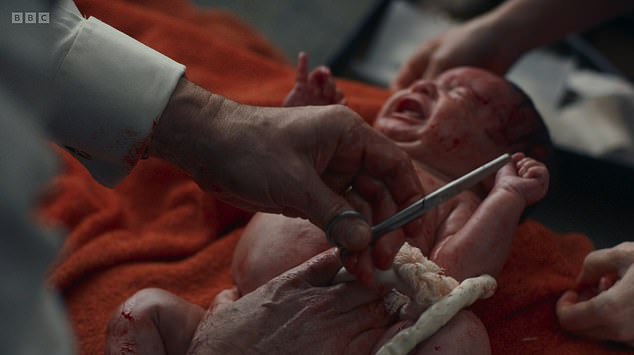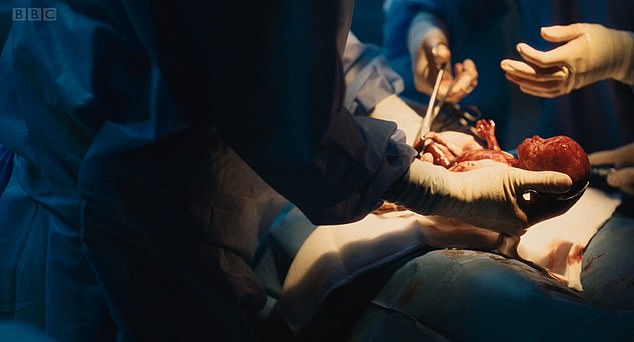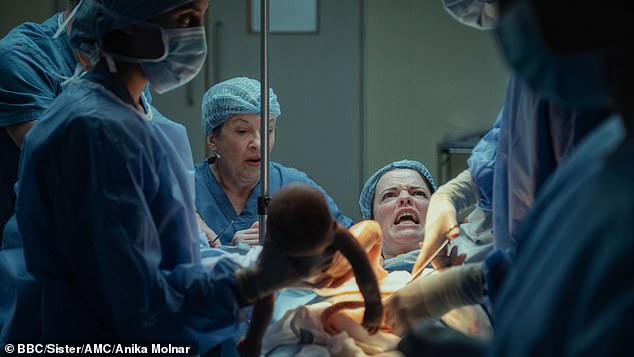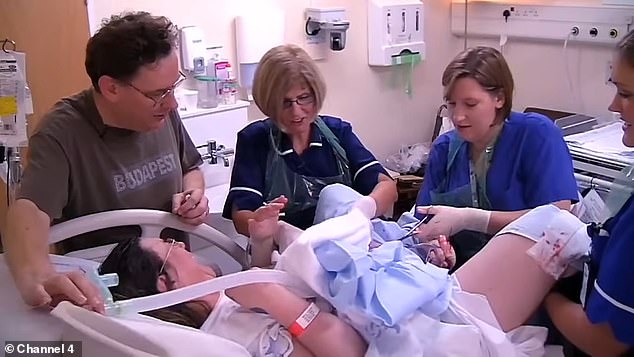TV shows like BBC’s Call The Midwife and C4’s One Born Every Minute ‘are inaccurately depicting childbirth’ and should come with safety warnings, say researchers
The moans of women in labor have helped make it one of the most popular dramas on television.
But Call The Midwife needs to brush up on its medical aspects after a study found it did not accurately portray childbirth.
The Sunday night food risks misinforming prospective parents and professionals, researchers said, as they called for safety warnings ahead of the shows.
A team from King’s College London and the University of Liverpool analyzed 87 births featured in 48 episodes of three British popular fictional and reality TV programmes: BBC’s Call The Midwife, This Is Going To Hurt and Channel 4’s One Born Every Minute .
They found that they largely showed modern updates to employment care, in line with National Institute for Health and Care Excellence (NICE) guidelines.

Call The Midwife is to revamp its medical scenes after a study found it was not accurately portraying childbirth. The Sunday night food risks misinforming expectant parents and professionals, researchers said, as they called for safety warnings ahead of the shows

A team from King’s College London and the University of Liverpool analyzed 87 births featured in 48 episodes of three British popular fictional and reality TV programmes: BBC’s Call The Midwife (pictured), This Is Going To Hurt and Channel 4’s One Born Every minute

Images of midwives and doctors clamping the umbilical cord were depicted inaccurately or dramatized as unimportant a third of the time, the researchers found. In the photo: this is going to hurt

During childbirth, the umbilical cord between mother and child is clamped before it is tied and cut. In the photo: this is going to hurt

The procedure should not be performed until one to five minutes after birth because it blocks blood circulation between mother and child during the time the baby begins to breathe. In the photo: one is born every minute
But images of midwives and doctors clamping the umbilical cord were depicted inaccurately or dramatized as unimportant in a third of cases.
It is worrying that harmful medical practices that can cause death and brain damage in premature babies are presented as standard practice on modern TV programmes.
Andrew Weeks, professor of maternal health at the University of Liverpool, said: ‘Health professionals know that midwives and doctors should not interrupt blood flow to the newborn baby, nor separate mother and baby without urgent reason, and yet this is the case. what is shown as common practice in popular television programs.
‘Incorrect depictions such as these, no matter how routine, can lead to misinterpretations of correct practice by the public.
‘The language used in programming ‘delayed’ or ‘delayed’ clamping can lead people to think it should happen ‘early’ or ‘immediately’ when that is not correct.
“This illustrates the need for safety recommendations when TV dramas depict birth practices and procedures that are outdated and inaccurate.”
During childbirth, the umbilical cord between mother and child is clamped before it is tied and cut.
The procedure should not be performed until one to five minutes after birth because it blocks blood circulation between mother and child during the time the baby begins to breathe.
If the umbilical cord is clamped too quickly, there is a risk that the baby will no longer receive blood that enters the pulmonary circulation.
The researchers found that the clamping of the umbilical cord was rarely shown on TV and received less attention on screen than the baby’s first cry or the cutting of the umbilical cord, a ritual now increasingly performed by the father executed.
Only four of the 25 cases correctly showed that they occurred after at least one minute, while the others occurred too early.
Susan Bewley, professor of midwifery and women’s health at King’s College London, said: ‘Millions of viewers watch programs like Call the Midwife every week to be entertained, but the line between fact and fiction is blurring.
‘We are impressed that British television programs have accurately depicted some of the changes in childbirth over the past century, but on the other hand have also given the public a view of the poor quality of care when it comes to clamping during labor .
‘These inaccurate depictions can impact how people view healthcare in the real world.
‘We saw premature umbilical cord clamping in most deliveries on television, but no program informed viewers about the safety aspects.
‘When showing outdated practices, broadcasters have a public health obligation to inform viewers that this immediate medical intervention is no longer recommended. No broadcaster wants to broadcast the sleeping positions associated with cot death without comment.’
